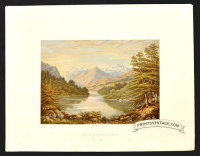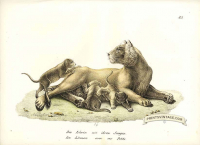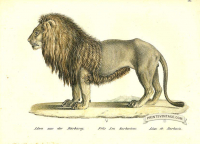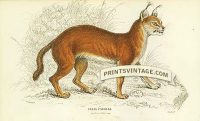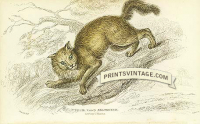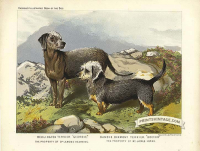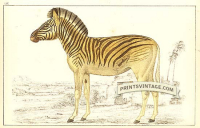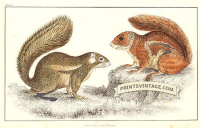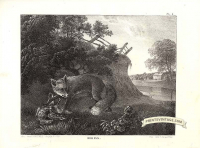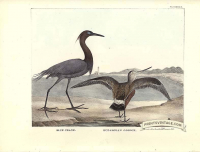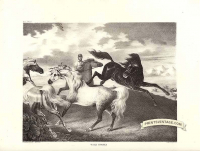An antique print is one that was made more than one hundred years ago.
Most, but not all, antique prints on the market today have been removed from books. Not all antique prints have been ripped from books. Many printers made a very good living over the past centuries printing cheaper copies of great works of art. People would buy them for display - just as we now might buy posters to brighten up a room. Many religious prints, in particular were printed and sold to the faithful, who would hang them in their homes to create an aura of piety.
We are occasionally asked about the colouring of the antique prints we sell, whether it is genuine. The answer is - it depends. All of the print-making techniques described below could produce coloured prints: you just take a print and over-print it with a carefully-positioned plate in another colour. Some prints were, however, hand-coloured at the time of publishing, and some subsequently.
Copper Engraving
An intaglio print-making method - in other words the design is engraved into the plate using a graver or burin. When the plate is inked and cleaned, but some ink remains in the engraved lines; when the plate is pressed onto paper under high pressure, it is this ink which is absorbed by the paper to produce the print impression.
Mezzotint
Method of copper or steel engraving which enables prints to benefit from tones. Mezzotint was invented by a Dutch military officer, Ludwig von Siegen in the middle of the seventeenth (17th) century, and popularized in Britain in the eighteenth (18th) century. It involves engraving the whole surface of the plate with a curved, saw-toothed tool. Every shade from black to white is achievable, but there is no line drawing, so mezzotint technology was ideal for producing reproduction prints of famous artworks. Mezzotint was superseded by photoengraving.
Woodcut, also called Woodblock
The print design is carved in relief along the grain of a block of soft wood. When the design is inked and pressed onto paper, it leaves an impression of itself. This is the oldest method for producing prints - it was used to impress designs on ceramics and textiles in ancient Egypt, Babylon and China. The first Woodcut prints appeared in Europe at the beginning of the fifteenth (15th) century. It is possible to pick up some wonderful antique woodcut prints for reasonable prices, though the classics of the genre, by Pfister, Durer and Holbein the younger are astronomically expensive. By the eighteenth (18th) century, wood cut technique was no longer being used.
Wood Engraving
A print-making technique in which lines print white on a black background, popularised in Britain by Thomas Bewick. Gustave Dore was the leading French exponent of the art in the ninteenth (19th) century, and some of William Blake's most famous book illustrations were wood engravings. In England, John Swain and the Dalziel brothers were the most prolific producers of wood-engraved prints, and in nineteenth (19th) century US Alexander Anderson, William Linton and Timothy Cole were the leading engravers.
Steel Engraving
In the nineteenth (19th) century, the price of copper was driven sky-high by new electrical applications for the metal, but the price of steel was dropping. So from 1820 printers switched from copper engraving to steel engraving. Steel had the added advantage of being much harder than copper, so the plates lasted much longer and more prints could be produced before they wore out. However, by the second half of the nineteenth (19th) century, steel engraving was threatened by the much cheaper process of photoengraving to produce prints.
Photoengraving
The subject of the print or illustration is photographically recorded on a sensitized metal plate, which is then etched. Halftone effects are achieved by photographing through a wire screen to create a dotted pattern. Larger dots hold more ink, and so are darker, areas with small dots are lighter. The finer the screen, the better quality the photo-engraving: 65 lines per inch is coarse, 150 lines per inch is fine.
Lithograph
The drawing is transferred to a stone plate with a greasy crayon or tusche. Ink sticks to the drawing, but not to the plate, so when the plate is pressed onto paper, the ink is absorbed, leaving an impression of the original drawing. Invented in the 18th century.
Chromolithograph
A chromolithograph is a color lithograph in which each of many colors is printed by a separate stone.
Etching
The process of etching uses acid instead of a burin to engrave a metal printing plate. Antique prints produced by this method are also called etchings. A layer of acid-resistant varnish is applied to the plate, which is made of zinc or copper. The artist uses a needle to expose the metal. When the plate is submerged in acid, the exposed lines are eaten into the plate. Light lines can be achieved by removing the plate part-way through etching and re-coating them with varnish. Dark lines occur when the acid eats most deeply. The plate is then cleaned, coated with ink, and used to produce prints.
Drypoint
A similar print-making technique to etching, except the design is scratched directly into the plate, rather than into a varnish layer. Unlike engravings, drypoint lines are very shallow, but the burr raised by the needle is left, imparting texture to the print until the plate is worn. Durer, Rembrandt, Whistler, and Picasso used drypoint technique, but if their prints are what you are looking for, you've come to the wrong website, I just do normal antique prints.
Aquatint
Aquatint is a form of etching which looks very similar to a wash drawing. It can be combined with hard-ground etching.


